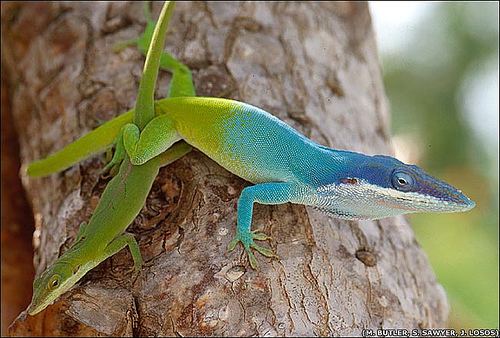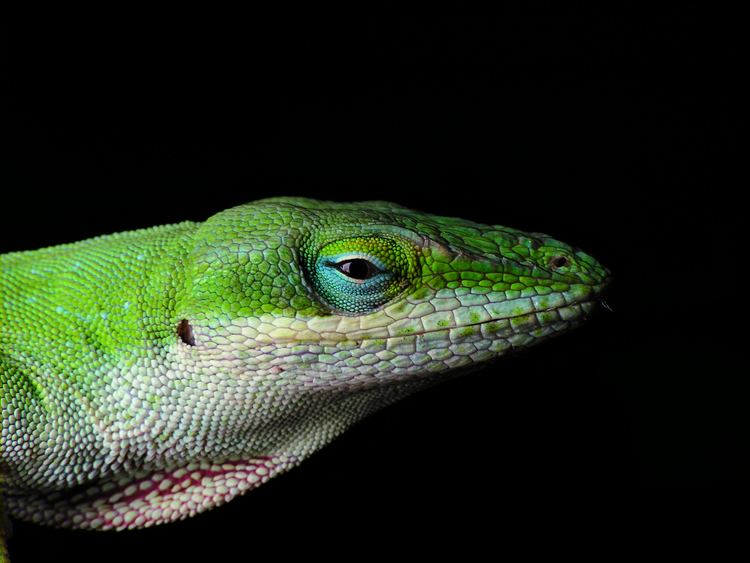Family Polychrotidae Higher classification Dactyloidae Rank Genus | Suborder Iguania Scientific name Anolis Phylum Chordata Order Scaled reptiles | |
 | ||
Lower classifications Carolina anole, Brown anole, Knight Anole, Martinique's anole, Allison's anole | ||
Anolis, or anoles, is a genus of iguanian (anole) lizards belonging to the family Dactyloidae. With 391 species, Anolis represents the world's most species-rich amniote tetrapod genus.
Contents

Anolis lizard dissection
Taxonomy
This very large genus displays considerable paraphyly, but phylogenetic analysis suggests a number of subgroups or clades.
These include;

Several species of Anolis are occasionally ascribed to the genus Norops, but the validity of Norops is not widely accepted. Several species often listed under Anolis have been ascribed to the genus Phenacosaurus, but recent work places them in the clade Dactyloa (Dactyloa heteroderma species group).
The green anole (Anolis carolinensis) has recently become the first reptile to have its complete genome sequenced.

Closely related, recently diverged anole lizards exhibited more divergence in thermal biology than in morphology. These anole lizards are thought to have the same structural niche and have similarities in their size and shape. However they inhabited different climatic niches in which there was variability in temperature and openness of the environment. This suggests that thermal physiology is more associated with recently diverged anole lizards.
Ecomorphs

Anolis lizards are some of the best examples of both adaptive radiation and convergent evolution. Populations of lizards on isolated islands diverge to occupy separate ecological niches, mostly in terms of the location within the vegetation where they forage (such as in the crown of trees vs. the trunk vs. underlying shrubs). These divergences in habitat are accompanied by morphological changes primarily related to moving on the substrate diameter they most frequently encounter, with twig ecomorphs having short limbs, while trunk ecomorphs have long limbs.
In addition, these patterns repeat on numerous islands, with animals in similar habitats converging on similar body forms repeatedly. This demonstrates adaptive radiation can actually be predictable based on habitat encountered, and experimental introductions onto formerly lizard-free islands have proven Anolis evolution can be predicted.
After appearing on each of the four Greater Antillean Islands about 50 million years ago, Anolis lizards spread on each island to occupy niches in the island's trees. Some living in the tree canopy area, others low on the tree trunk near the ground; others in the mid-trunk area, others on twigs. Each new species developed its own distinct body type, called an ecomorph, adapted to the tree niche where it lived. Together the different species occupied their various niches in the trees as a "community". A study of lizard fossils trapped in amber, show the lizard communities have existed for about 20 million years or more. Four modern ecomorph body types, trunk-crown, trunk-ground, trunk and twig are represented in the amber fossils study. Close comparison of the lizard fossils with their descendants alive today in the Caribbean shows the lizards have changed little in the millions of years.
Species
The anolis lizards that are less susceptible to predation are those that have a dewlap that has both the scales and the skin in between match the expected pale gray or white like color of its ventral surface.
